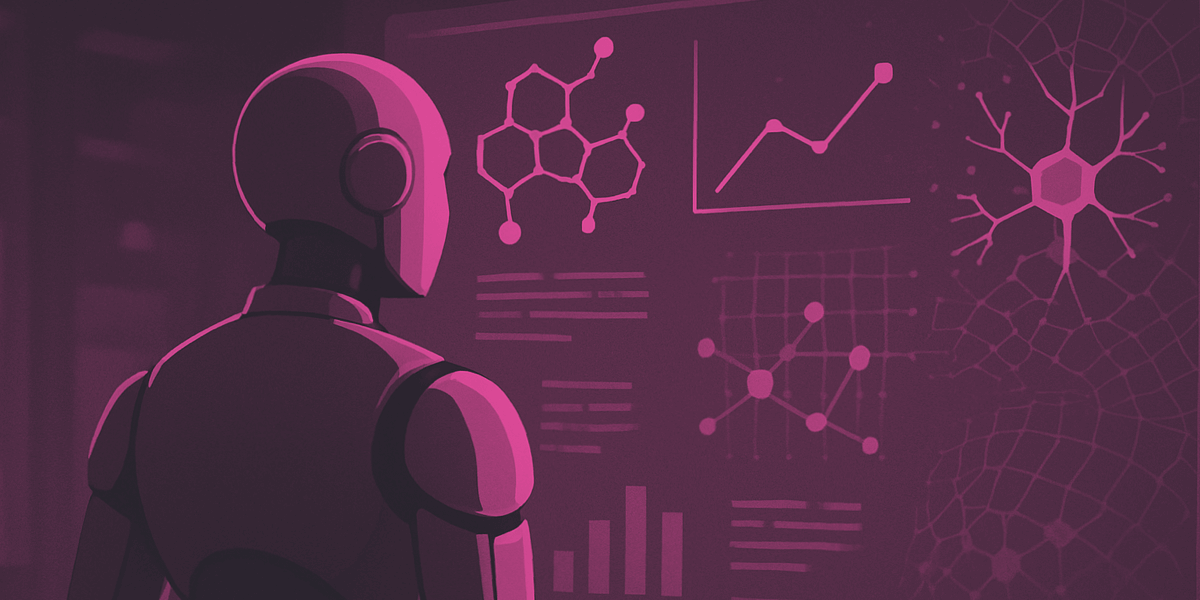How AI Agents Are Revolutionizing Scientific and Enterprise Innovation?

In the evolving landscape of artificial intelligence, a quiet revolution is taking place. Large Language Models (LLMs) and AI agents are no longer limited to following instructions or performing isolated tasks — they are now beginning to think, hypothesize, experiment, and create. This post explores how LLMs are being deployed as autonomous co-researchers and innovation agents — transforming the research lifecycle and enterprise ideation processes alike. We’ll cover recent breakthroughs in autonomous scientific discovery, financial research, and enterprise solution generation, and how LLM-powered AI agents are driving this change.
Toward Fully Autonomous AI Agent Inventors
The combination of LLMs, autonomous agents, and evolutionary frameworks unlocks a new way to build:
- Scientific discoveries (papers, algorithms, experiments),
- Enterprise solutions (agent systems, business reports, demos),
- Creative content (landing pages, blog posts, dashboards),
- Startup evaluation tools (investor pitch decks, market analysis, idea validation).
And the best part? This can all be done before access to real data or tools — by using simulated tools, mock data, or fault-injected environments for testing. That means faster iteration cycles, better stakeholder engagement, and less friction in innovation.
Background in Autonomous Scientific Discovery
The idea that machines could independently make scientific discoveries once seemed far-fetched. But a new generation of AI systems is making that a reality:
- AlphaTensor by DeepMind discovered new, efficient matrix multiplication algorithms that outperform human-invented ones.
- AlphaCode, also from DeepMind, autonomously developed faster sorting algorithms and solved complex programming challenges.
- Google’s AI Co-Scientist facilitates human-AI collaboration by turning user-defined research goals into structured research plans, simulations, debates, and experimental designs — even culminating in full paper drafts.
- Sakana AI Scientist, from the inventors of the Transformer architecture, automates end-to-end research. It generates novel ideas, validates them against academic literature, executes experiments, analyzes results, and writes publications — some of which have been accepted at top-tier venues like ICLR.
These systems redefine the AI role — from a tool that executes tasks to a partner that explores the unknown.
LLMs as Autonomous Research Collaborators
LLMs now possess the capabilities to perform virtually the entire scientific method:
- Brainstorming and hypothesis generation: LLMs generate new research questions and suggest methodological improvements.
- Literature review: They explore scientific databases like Semantic Scholar and Google Scholar to identify novel contributions.
- Experimentation: AI agents generate code (e.g., CUDA kernels for deep learning models), execute experiments, and adapt based on failures.
- Analysis and evaluation: They interpret results, visualize findings, and critique their outputs.
- Publication writing: Finally, they generate research papers, slides, and presentations — sometimes without human intervention.
This workflow is already being used in practice, with LLMs acting as collaborators in both academic and applied domains.
Autonomous Agentic AI Solution Ideator
Beyond research, aiXplain uses LLM-powered AI Agents to generate, implement, and validate enterprise-grade AI solutions. This capability is especially useful in B2B contexts where AI teams may lack deep domain knowledge about a customer’s industry. To address this, an autonomous multi-agent framework has been developed that:
- Generates technically commercially viable enterprise AI use-case ideas given a set of available tools.
- Evaluates each idea using criteria such as uniqueness, scalability, market size, and competitive landscape.
- Implements these ideas as fully functioning Agentic AI systems, using YAML-based system definitions and automated testing.
- Produces demo outputs, blog content, and even pitch decks to support internal use or customer-facing engagements.
For example, the system has automatically generated and implemented ideas such as:
- RFP response generators,
- Legal assistant agents,
- Media monitoring systems,
- Learning and development automation,
- Competitor intelligence tools.
This approach accelerates proof-of-concept development, reduces reliance on manual ideation, and enables scalable productization of AI capabilities. Explore agentic solutions built on aiXplain
Why This Matters
Whether you’re an AI scientist, researcher, startup founder, or enterprise strategist, the implications are clear:
- LLMs are no longer just tools — they’re becoming co-creators.
- Scientific discovery is no longer limited by human ideation speed.
- Enterprise ideation and implementation can be scaled and optimized autonomously.
- Science and product development are converging via AI-driven innovation workflows.
We’re only scratching the surface of what’s possible.
 We have cookies!
We have cookies!